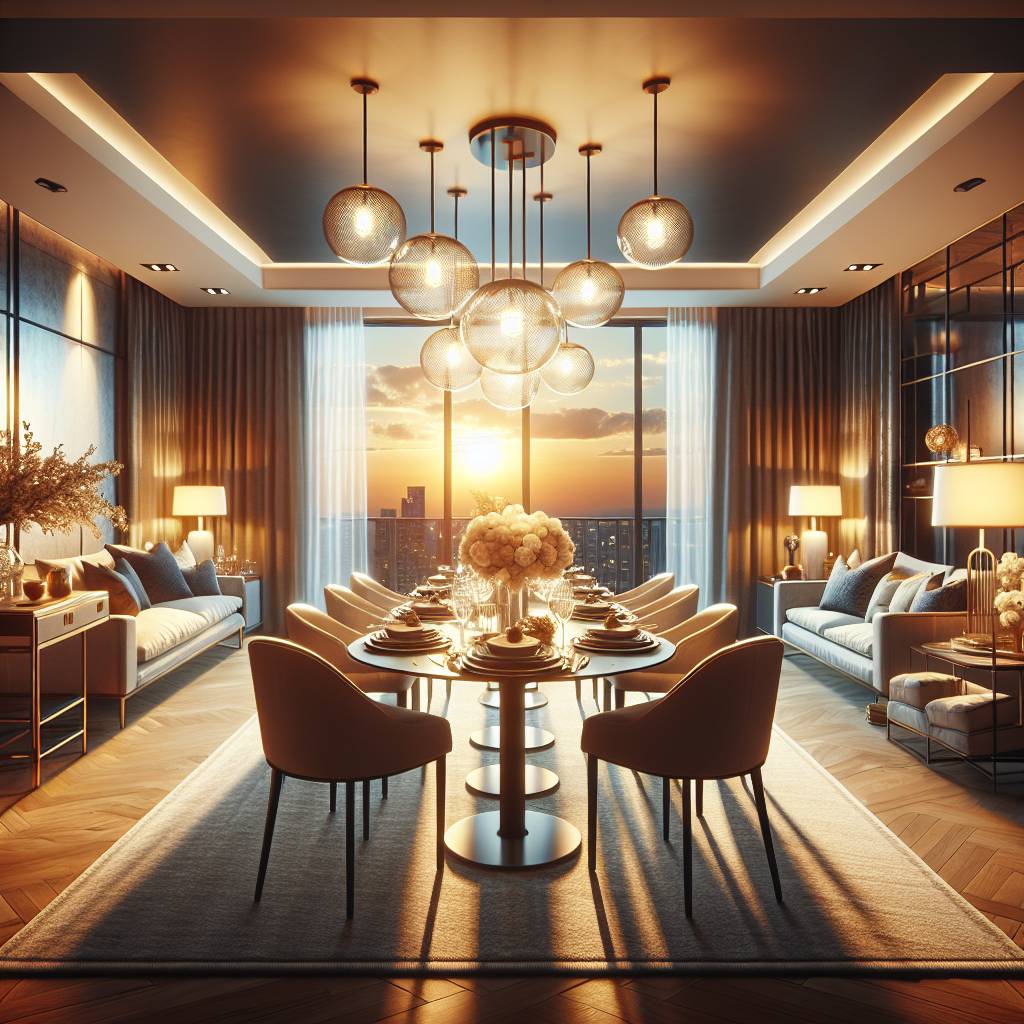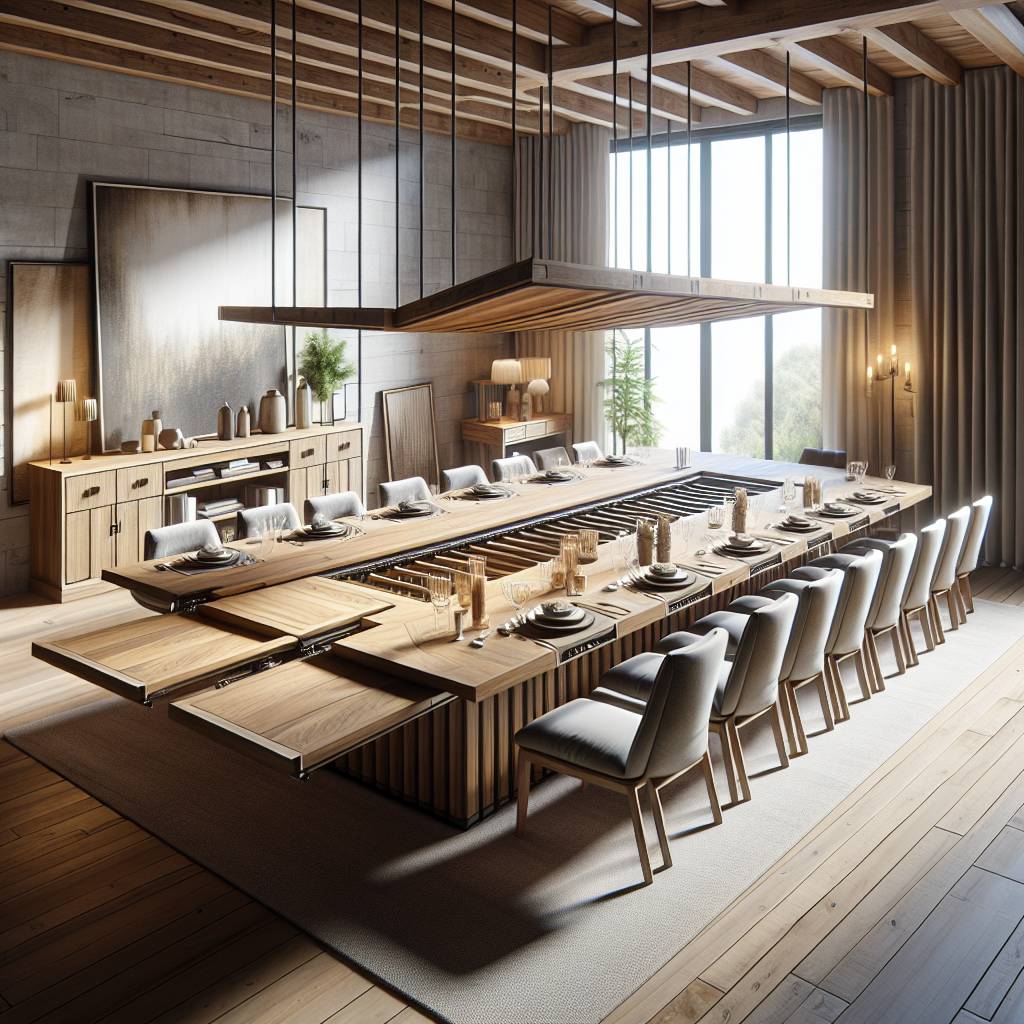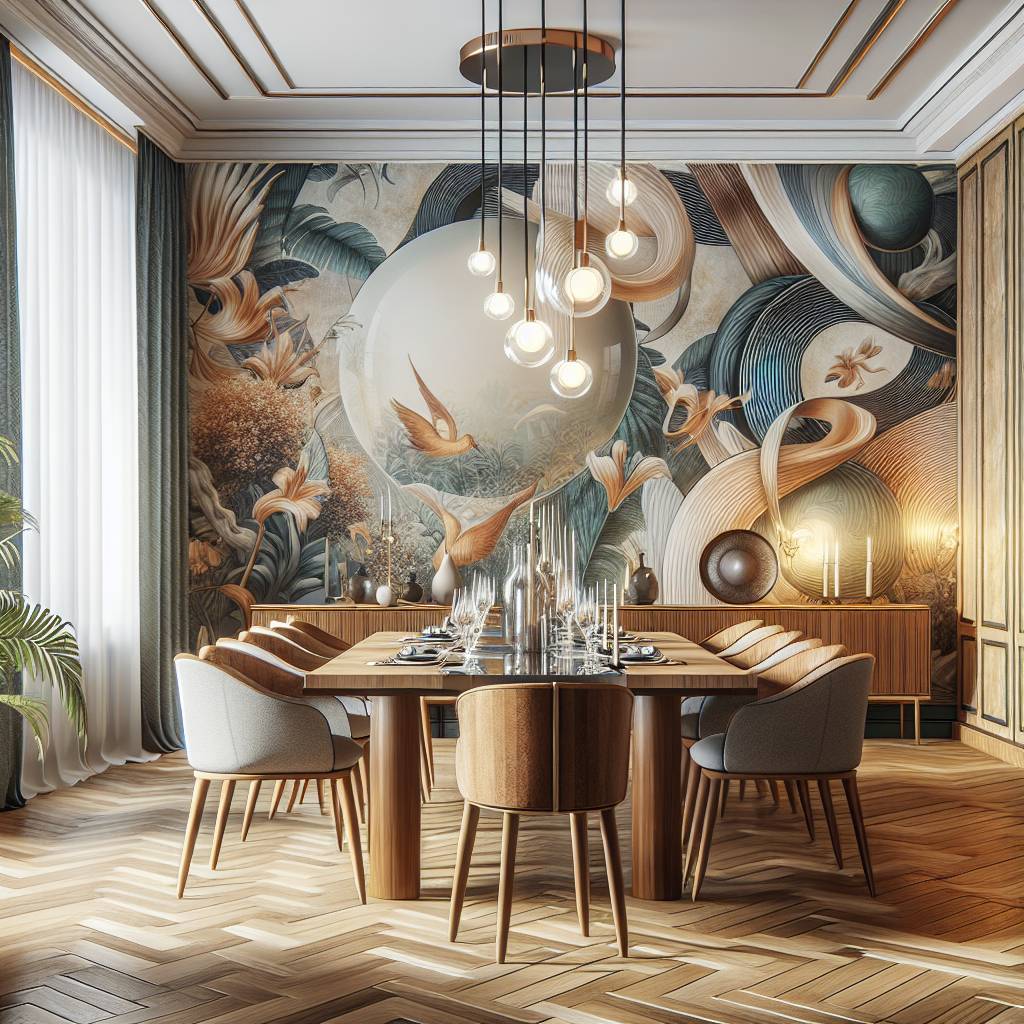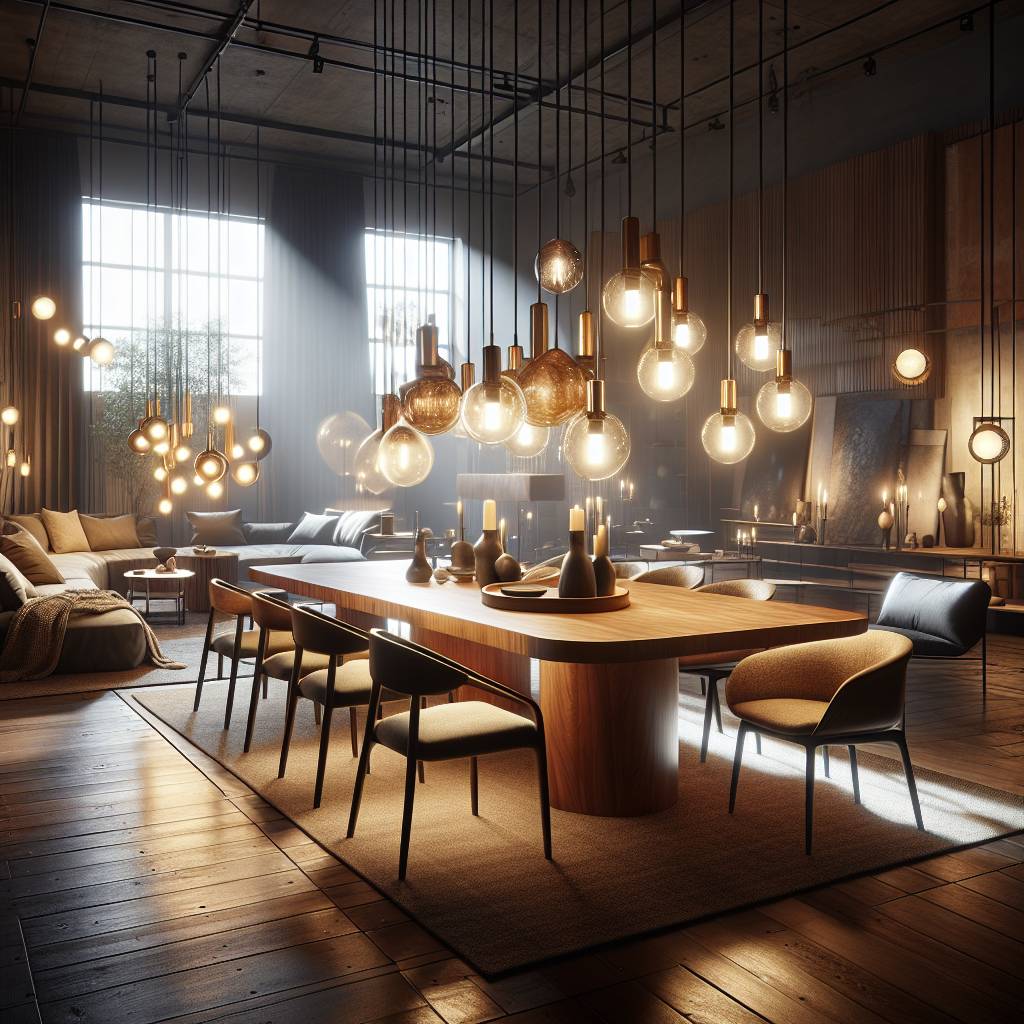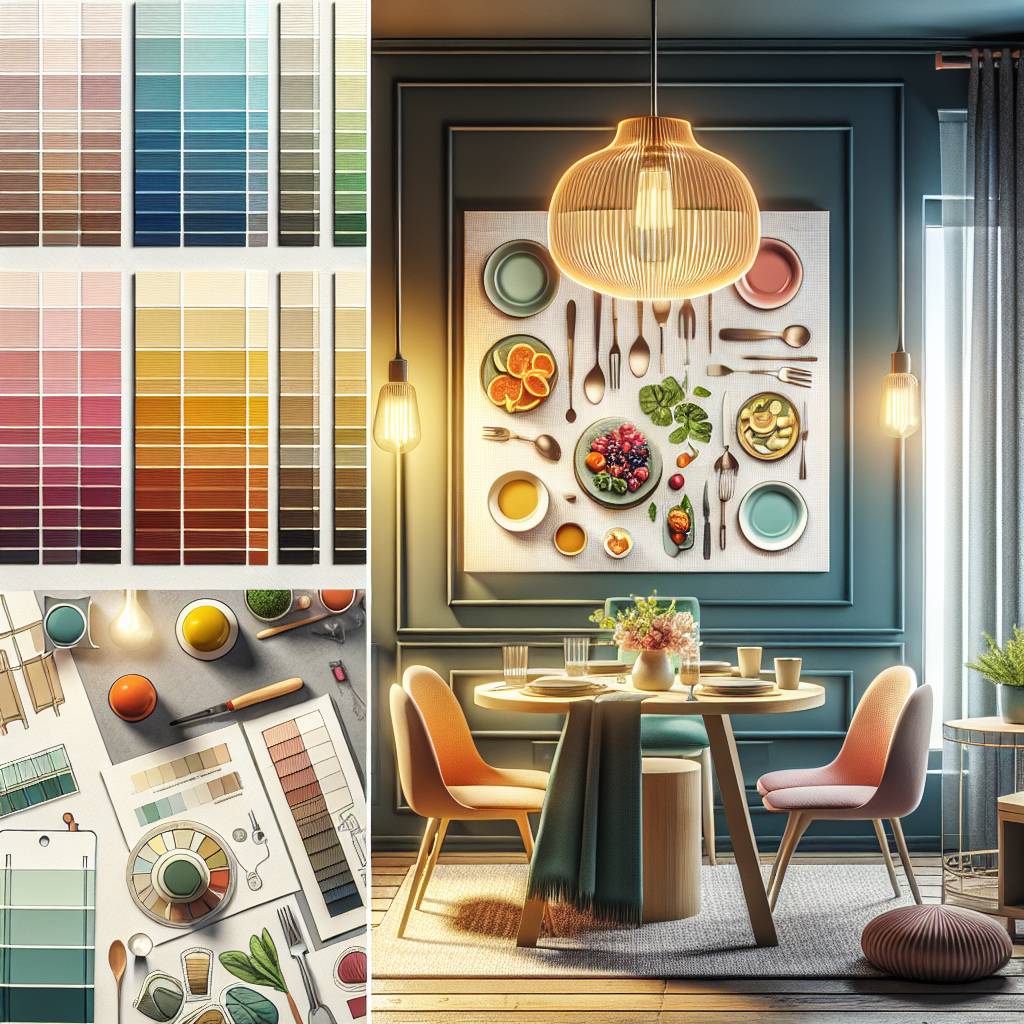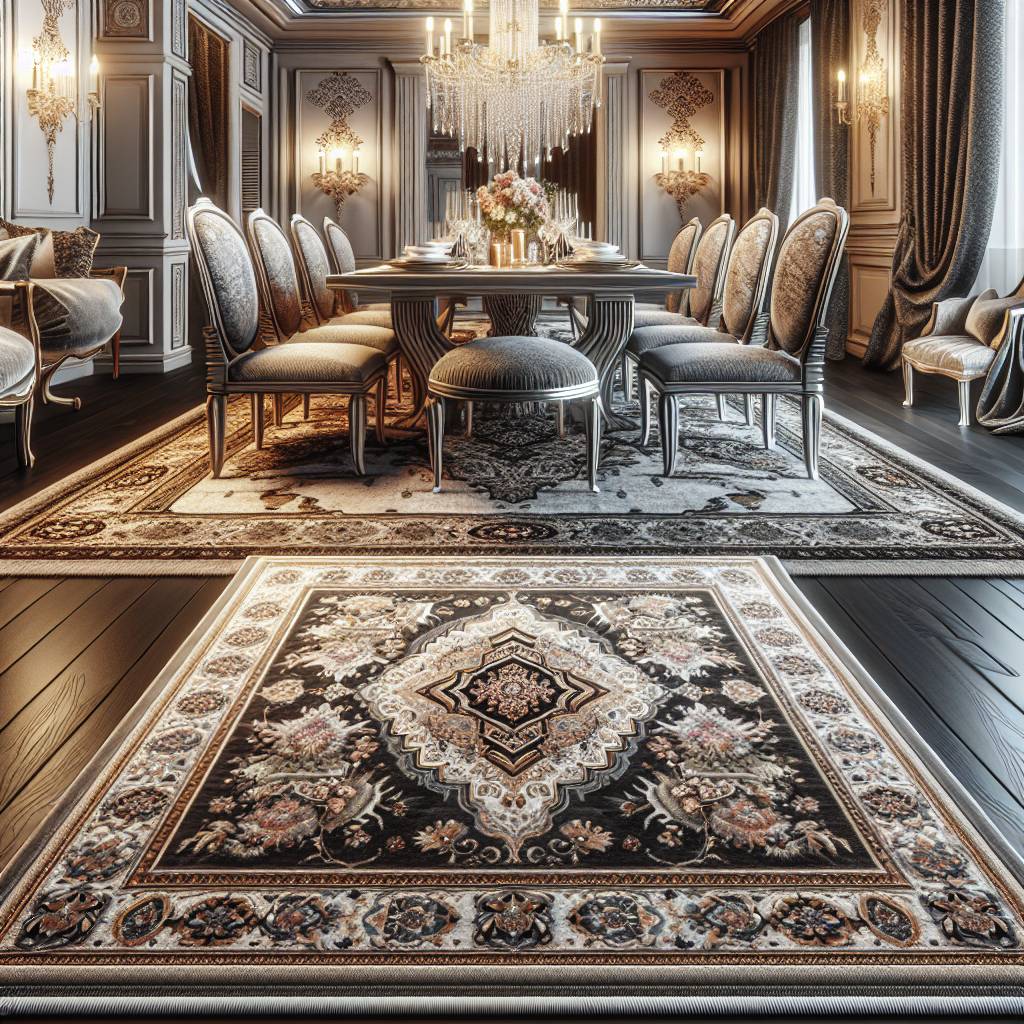Key Takeaways
- Understanding the different types of dining room lights is crucial for making an informed decision when selecting fixtures.
- When choosing a chandelier, consider the size and style of your dining space to ensure it complements the room.
- Exploring modern and transitional lighting ideas can add a contemporary touch to your dining room while maintaining functionality.
- Sizing and hanging your dining room light fixtures correctly can significantly impact the overall aesthetic and functionality of the space.
- Creating ambiance with layered lighting, including ambient, task, and accent lighting, can enhance the dining experience.
- Considering the scale of the fixtures and leveraging natural light are essential factors in designing an effective lighting scheme for your dining room.
Understanding Different Types of Dining Room Lights
Popular Options for Dining Room Lighting Fixtures
There are several popular options to consider. Chandeliers are elegant and often serve as a focal point in the dining area. They come in various sizes and styles, from traditional crystal designs to modern, minimalist ones. Pendant lights are another common choice, offering versatile lighting solutions while adding a decorative touch to the perfect dining room. These fixtures hang from the ceiling and can be arranged in clusters or rows above the dining table.
recessed lighting is a practical option that provides ambient illumination without taking up visual space. It’s discreet and complements various interior styles. For those who prefer a more understated approach, wall sconces offer an alternative way to illuminate the dining room while contributing to the overall aesthetic. Lastly, track lighting fixture is flexible and allows for customizable positioning of light sources along a track system.
Understanding these different types of dining room lights, designer fixtures, will enable homeowners to make informed decisions when selecting contrast for their spaces.
Factors to Consider When Selecting Dining Room Lights
When choosing dining room lighting fixtures, it’s important to consider factors such as the size of the space, the height of the ceiling, the overall design scheme, and the designer. For instance, larger rooms may benefit from grander chandeliers or multiple pendant lights for adequate illumination.
The height of the ceiling also plays a crucial role in determining suitable fixtures; lower ceilings may require flush-mounted or semi-flush-mounted options like recessed lighting or certain types of pendants. On the other hand, higher ceilings provide opportunities for statement-making chandeliers with elongated suspensions.
Furthermore, considering how each type of fixture contributes to the ambiance and style of your dining area, image credit is essential. A rustic farmhouse-style dining room might pair well with wrought iron chandeliers or vintage-inspired pendant lights, while sleek track lighting could complement a contemporary setting.
Choosing the Perfect Chandelier for Your Space
Consider Size
When selecting a dining room lighting fixture, such as a chandelier, it’s crucial to consider the size of your dining table. A general rule of thumb is that the diameter of the chandelier should be about half to three-quarters the width of the table. For example, if your dining table is 48 inches wide, a chandelier fixture with a diameter of 24 to 36 inches would be suitable.
It’s important to ensure that the chandelier fixture doesn’t overpower or get lost in relation to the size of your dining table and surrounding space. A well-proportioned chandelier can act as an anchor and bring balance to your dining area.
Another aspect related to size is ceiling height. If you have high ceilings, you may want to consider a larger chandelier or one with an elongated design, while lower ceilings are better suited for more compact options.
Complementing Style
The style and decor of your dining room play a significant role in choosing an appropriate chandelier fixture. Whether you have traditional, modern, industrial, or eclectic decor, there are various styles of chandeliers available that can complement each aesthetic.
For instance:
- A crystal chandelier might suit classic or formal settings.
- An angular metal fixture could work well in contemporary spaces.
- A rustic wood and iron piece might enhance farmhouse-style rooms.
Consider how different materials and designs align with other elements in your space—such as furniture finishes and wall colors—to create a cohesive look throughout your dining room.
Pay Attention to Height
In addition to considering its visual impact on your space, it’s essential to pay attention to where you hang the chandelier for both proper lighting and visual appeal. The bottom of the dining room light fixture should ideally hang between 30 and 36 inches above the tabletop; however this may vary based on personal preference or specific needs dictated by unique architectural features within individual homes.
Modern and Transitional Lighting Ideas
Characteristics of Modern and Transitional Lighting Fixtures
Modern lighting fixtures are known for their sleek lines and minimalist designs. They often feature clean, geometric shapes and materials like chrome, glass, or brushed nickel. These fixtures can include pendant lights, track lighting, or chandeliers with a contemporary aesthetic. On the other hand, transitional lighting combines elements of both traditional and contemporary styles. It blends classic design elements with cleaner lines and a dining room light to create a timeless yet updated look.
When considering modern or transitional lighting ideas for your dining room, it’s essential to understand the characteristics of each style. For instance, modern fixtures may incorporate LED light sources for energy efficiency while boasting bold statement pieces that double as art in the space. Meanwhile, transitional fixtures might offer the flexibility of using a dimmer switch to adjust the brightness according to different occasions.
Incorporating modern or transitional lighting ideas into your dining room is not only a good idea but also a great way to give your space an easy update without completely renovating it. By choosing these styles of fixtures, you can instantly refresh the ambiance of your dining area while adding functionality through innovative features such as adjustable arms or customizable light sources.
Selecting Modern and Transitional Lighting Fixtures
When selecting dining room lighting fixtures, consider factors such as size and scale in relation to your dining table. A general rule is that the diameter of a chandelier should be about half to three-quarters the width of the table beneath it. This ensures proper illumination without overwhelming the space.
Think about how much light output you need based on various activities conducted in your dining area – from intimate dinners to lively gatherings with friends and family members. Choosing adjustable fixtures equipped with dimmer switches allows you to tailor the brightness level according to specific needs at any given time.
Furthermore, when integrating modern or transitional lighting ideas, don’t hesitate to mix different fixture types within one space for added visual interest. Combining pendant lights over the dining table with wall sconces along one side creates layers of light that contribute depth and warmth during meals.
To sum up: incorporating modern or transitional lighting ideas into your dining room offers an easy way to update its look by leveraging sleek designs that combine form and function seamlessly.
Sizing and Hanging Your Dining Room Light Fixtures
Determining the Right Size
When selecting dining room lighting fixtures, it’s crucial to consider the dimensions of your space. Measure the length and width of your dining area in feet, then add those numbers together. The sum, in inches, is a good estimate for the diameter of your ideal light fixture. For instance, if your dining room is 10 feet by 12 feet, look for a fixture around 22 inches in diameter.
To create a balanced visual impact within the space, avoid choosing a fixture that overwhelms or underserves the room. A too-small light can get lost in larger areas while an overly large one may dominate smaller spaces. By determining an appropriate size based on your measurements, you ensure that lighting fixtures complement rather than overpower your dining area.
Hanging at the Right Height
The height at which you hang dining room lighting fixtures significantly influences both functionality and aesthetics. Ideally, position it around 30 to 34 inches above the table surface for optimal illumination without obstructing sightlines across the table or causing glare during conversations.
Consider adjustable pendant lights or chandeliers with varying chain lengths to customize their positioning according to your specific needs and preferences. Flush mounts are excellent choices for lower ceilings as they provide ample illumination without sacrificing headroom.
Properly sized and positioned lighting fixtures contribute not only to adequate brightness but also enhance overall ambiance while ensuring comfortable interactions during meals or gatherings.
Creating Ambiance with Layered Lighting
Enhancing Depth and Functionality
Creating ambiance through layered lighting is key. This involves using multiple light sources, such as overhead lighting combined with task lighting like table or buffet lamps. By incorporating various light sources, you can enhance the depth and functionality of your dining space.
Imagine having a cozy dinner with friends under the warm glow of overhead pendant lights complemented by the soft illumination of elegant table lamps. The combination not only creates a welcoming atmosphere but also provides practicality for activities such as serving food or engaging in conversations at the table.
Setting the Desired Mood
Installing dimmer switches plays a crucial role in achieving an ideal ambiance in your dining room. These switches allow you to adjust the intensity of the light, enabling you to set just the right mood for different occasions. For example, dimming the lights during an intimate dinner gathering can create a more relaxed and romantic atmosphere akin to candlelight, while brightening them up when hosting a lively brunch adds vibrancy to the space.
Picture being able to effortlessly transition from a well-lit environment during meal preparation or homework sessions to a softer, cozier setting perfect for unwinding after a long day—all thanks to strategically placed dimmers that cater to various needs throughout your daily routine.
Considering Scale and Natural Light in Your Design
Proportionate Fixtures
When selecting dining room lighting fixtures, it’s crucial to consider the scale of your dining area. The right size of fixtures ensures they are proportionate to the space, creating a balanced visual impact. Large chandeliers or pendants may overwhelm a small dining room, while tiny fixtures might get lost in a large area.
It’s important to keep in mind that oversized fixtures can dominate the space, making it feel cramped, while undersized ones may not provide adequate illumination or make a significant design statement. Therefore, considering the scale is essential for achieving an aesthetically pleasing and functional dining room.
Harnessing Natural Light
Incorporating natural light into your dining room design can significantly enhance its ambiance. Positioning your dining table near windows allows natural light to flood the space during daytime meals. This not only reduces reliance on artificial lighting but also creates an inviting atmosphere with its warm glow.
To further maximize natural light, using sheer curtains instead of heavy drapes can allow sunlight to filter through while maintaining privacy. By harnessing natural light effectively, you can create a welcoming and comfortable environment for dining without solely relying on electrical sources.
Achieving Harmony
Balancing scale and natural light in your dining room design is pivotal for achieving harmony within the space. A well-proportioned fixture combined with ample natural light creates an inviting atmosphere that encourages social interaction and relaxation during meals.
Selecting the Ideal Pendant Lights for Your Table
Versatile Lighting Options
Pendant lights are versatile and can serve as a focal point or provide task lighting above the dining table. They come in various styles, sizes, and designs to suit different dining room aesthetics. For instance, if you have a modern dining room with sleek furniture, you may opt for minimalist pendant lights to complement the space’s contemporary feel.
Pendant lights not only illuminate the table but also add a decorative element to your dining area. Imagine having guests over for dinner under warm, ambient lighting that creates an inviting atmosphere. This is where pendant lights truly shine – they enhance the overall ambiance of your dining room while serving their practical purpose.
Consider Height, Size, and Style
When selecting pendant lights for your dining area, it’s crucial to consider their height, size, and style. The ideal height ensures that the light does not obstruct views across the table or impede eye contact during conversations. Considering scale is key; large pendant lights might overwhelm a small dining space while being lost in a larger one.
The size of your dining table should also influence your choice of pendant lights; larger tables generally require multiple or larger fixtures to adequately illuminate the entire surface. Furthermore, matching the style of pendant lights with other elements in your dining room such as chairs and sideboards can create a cohesive look.
Ensuring Comfortable Conversations
Another important factor when choosing pendant lighting is ensuring comfortable conversation among diners at the table. The right light placement fosters an environment where everyone feels at ease during meals without straining to see each other or dealing with excessive glare from overhead fixtures.
Tips for Matching Lighting to Your Dining Room Style
Traditional Styles
Traditional dining rooms often feature chandeliers with ornate details and classic designs. These fixtures can add a touch of elegance and sophistication to the space. Consider a chandelier with crystal embellishments or traditional candle-style lights for a timeless look. The warm glow of these fixtures can create an inviting ambiance, perfect for hosting formal dinners or family gatherings.
When selecting a dining room lighting fixture for a traditional setting, consider brass or bronze finishes that complement the classic decor. Opt for fixtures with intricate detailing such as scrollwork or floral motifs to enhance the overall aesthetic. A well-chosen chandelier can become the focal point of the room, drawing attention to your carefully curated dining area.
Industrial Styles
For industrial-style dining rooms, consider incorporating pendant lights with exposed bulbs and metal finishes. These fixtures often feature sleek lines and minimalist designs that align with modern industrial aesthetics. Look for pendant lights in black, matte silver, or copper tones to complement the raw and rugged appeal of an industrial space.
To perfectly illuminate your modern dining room while maintaining its edgy vibe, opt for geometrically shaped pendant lights made from materials like iron or steel. These bold statement pieces will not only provide ample lighting but also contribute to the overall contemporary look you want to achieve.
Matching your lighting fixtures to your dining room style is crucial in creating a cohesive and visually appealing space where every element complements each other seamlessly.
Frequently Asked Questions
How can I determine the right size of dining room lighting fixtures?
To find the ideal size for your dining room lighting, measure the width and length of your space in feet, then add those two numbers together. The sum in inches is a good guide for the diameter of your chandelier or pendant light.
What are some popular types of dining room lights?
Common types include chandeliers, pendant lights, and recessed lighting. Each offers its own unique ambiance and functionality, so consider how you want to illuminate your space before making a decision.
How do I match my dining room lighting to its style?
Consider matching traditional decor with classic chandeliers or modern spaces with sleek pendant lights. By aligning the style of your fixture with that of your room’s design elements, you can create a cohesive and visually appealing atmosphere.
What role does natural light play in selecting dining room lighting?
Natural light should complement artificial sources by providing balance. Take advantage of windows and skylights when planning where to position fixtures; this will help ensure an even distribution throughout the day.
Can I mix different types of lighting in my dining area?
Absolutely! Combining ambient (general), task (focused), and accent (decorative) lighting creates depth and character within a space. Layering these elements contributes to both functionality and aesthetics for an inviting environment.
